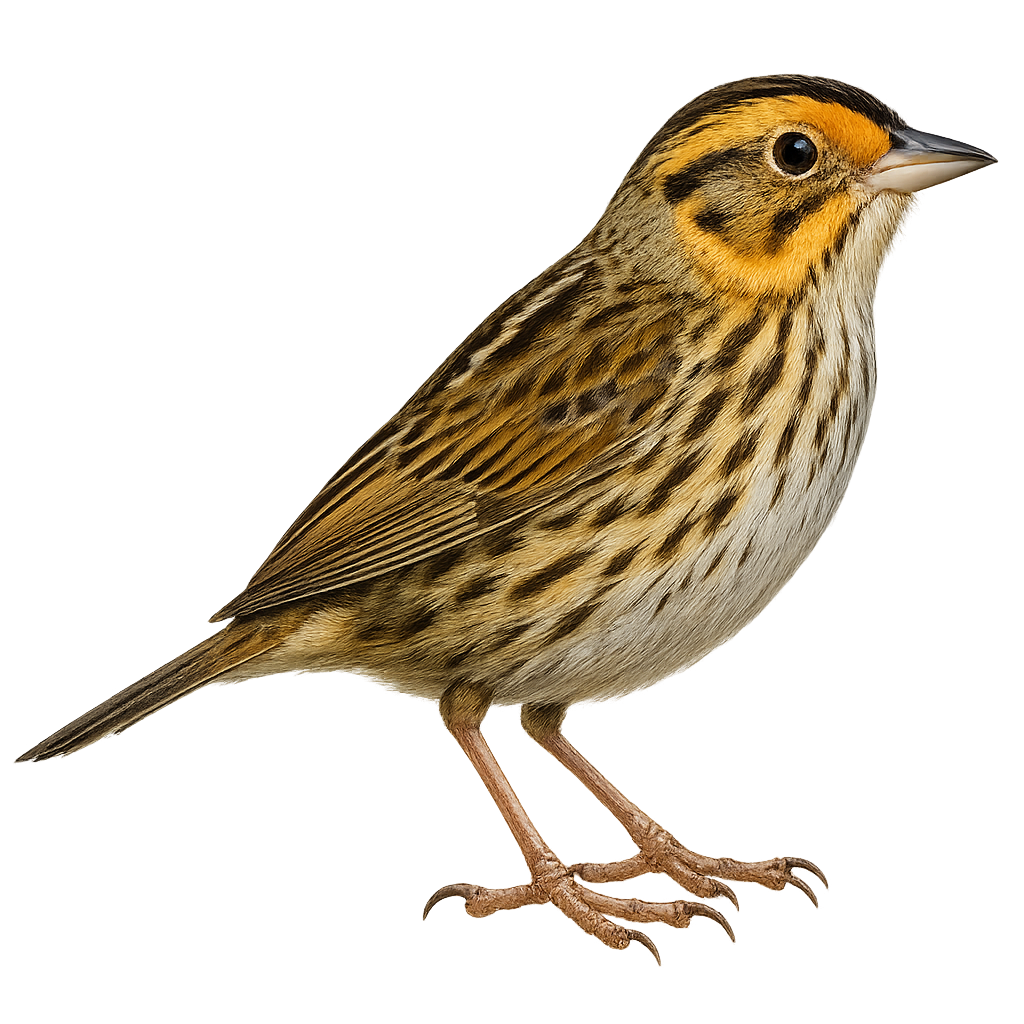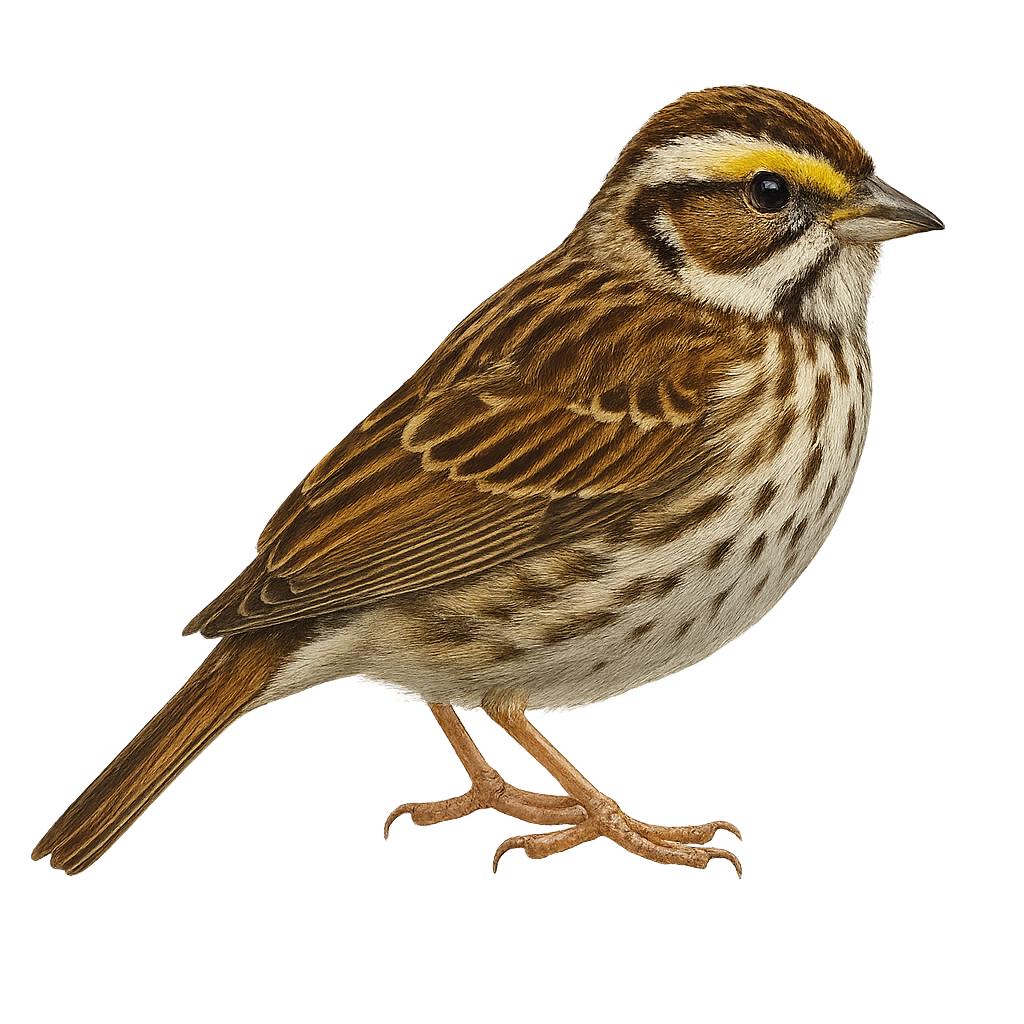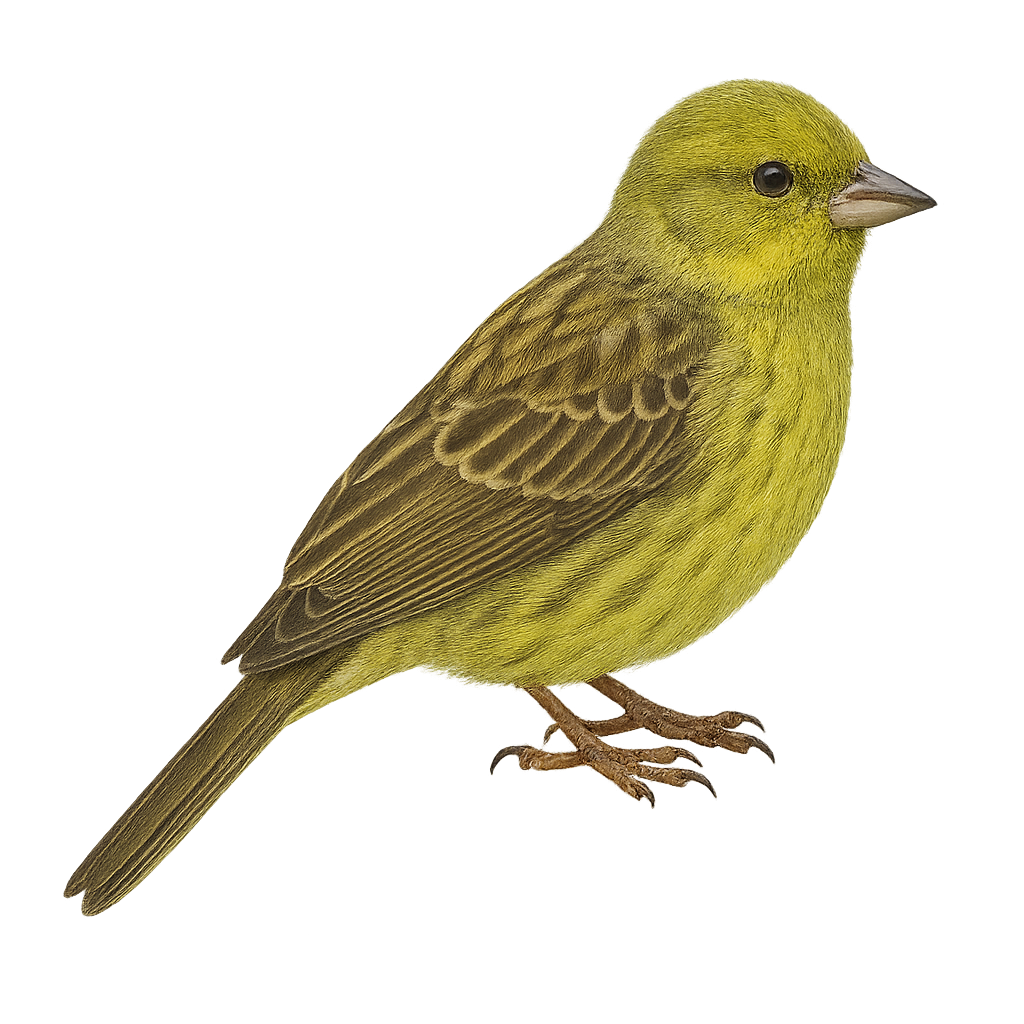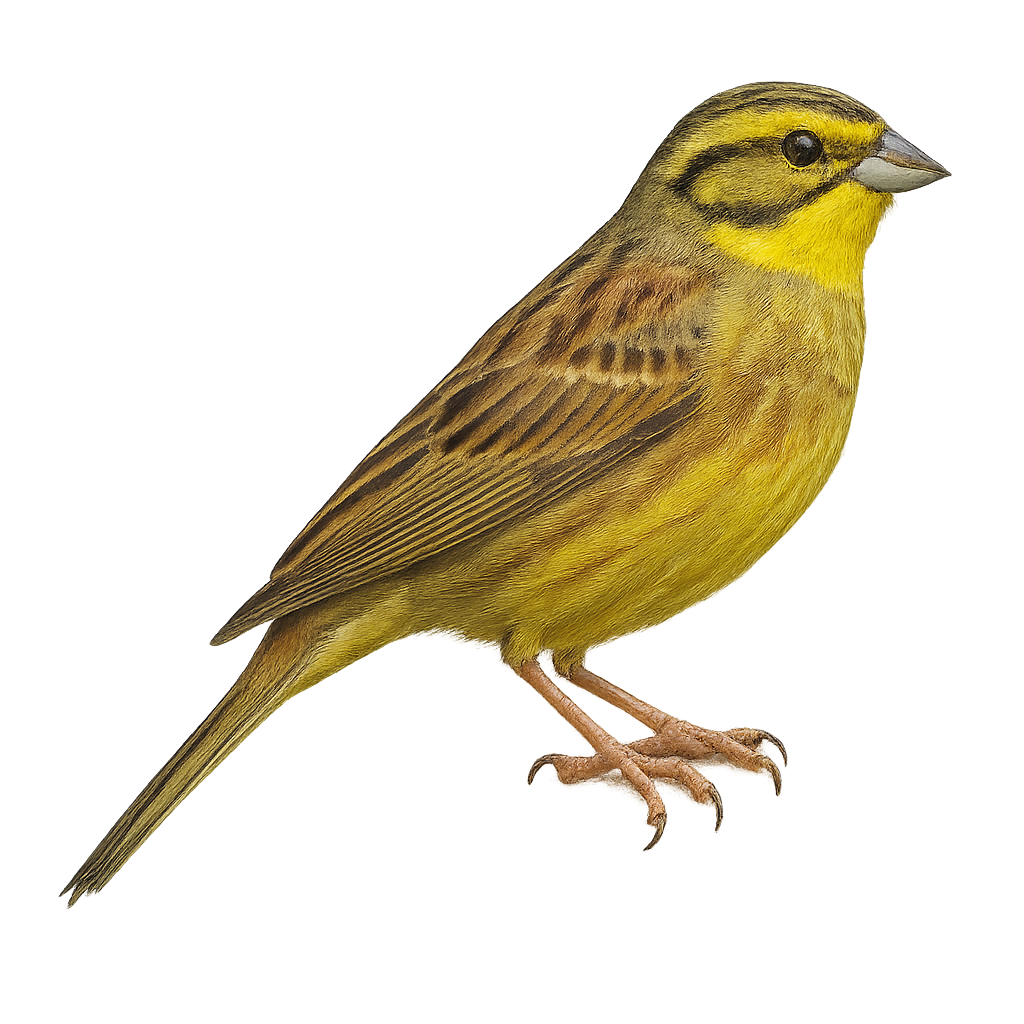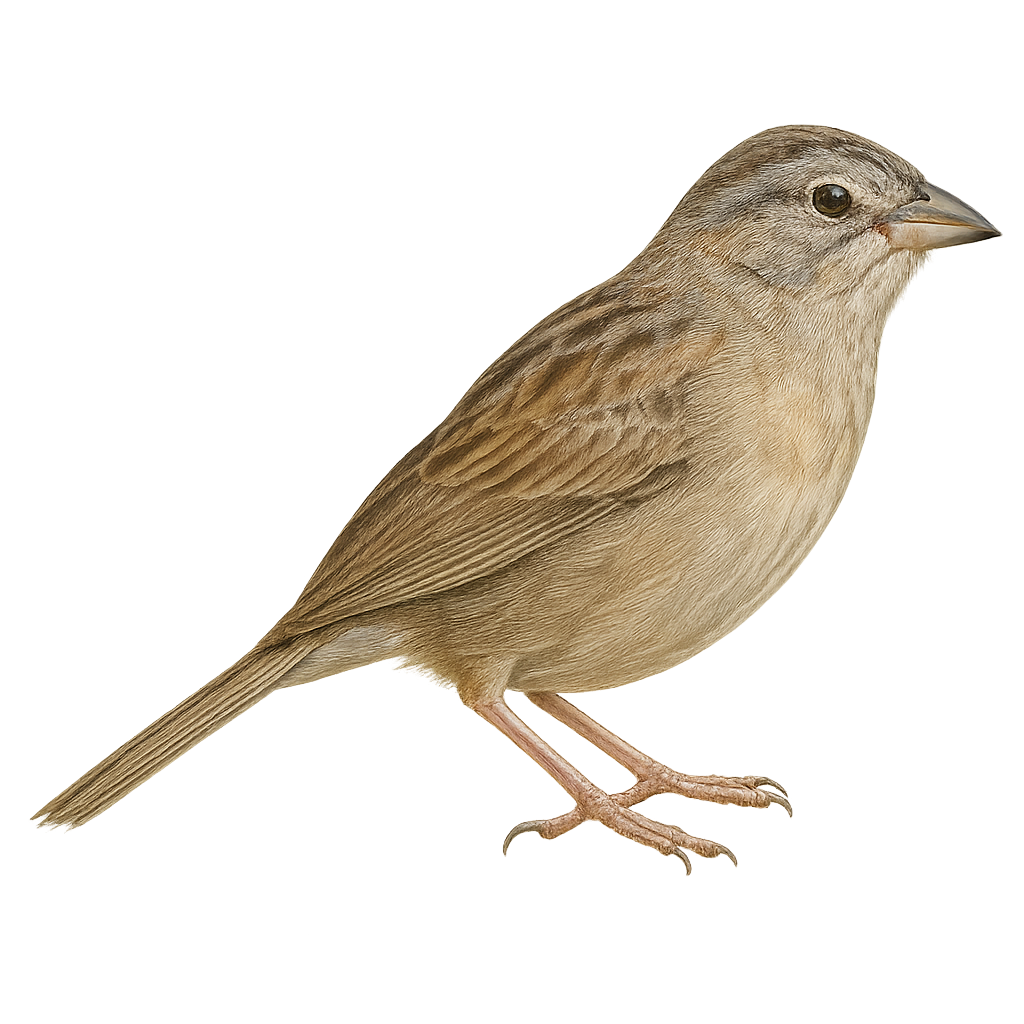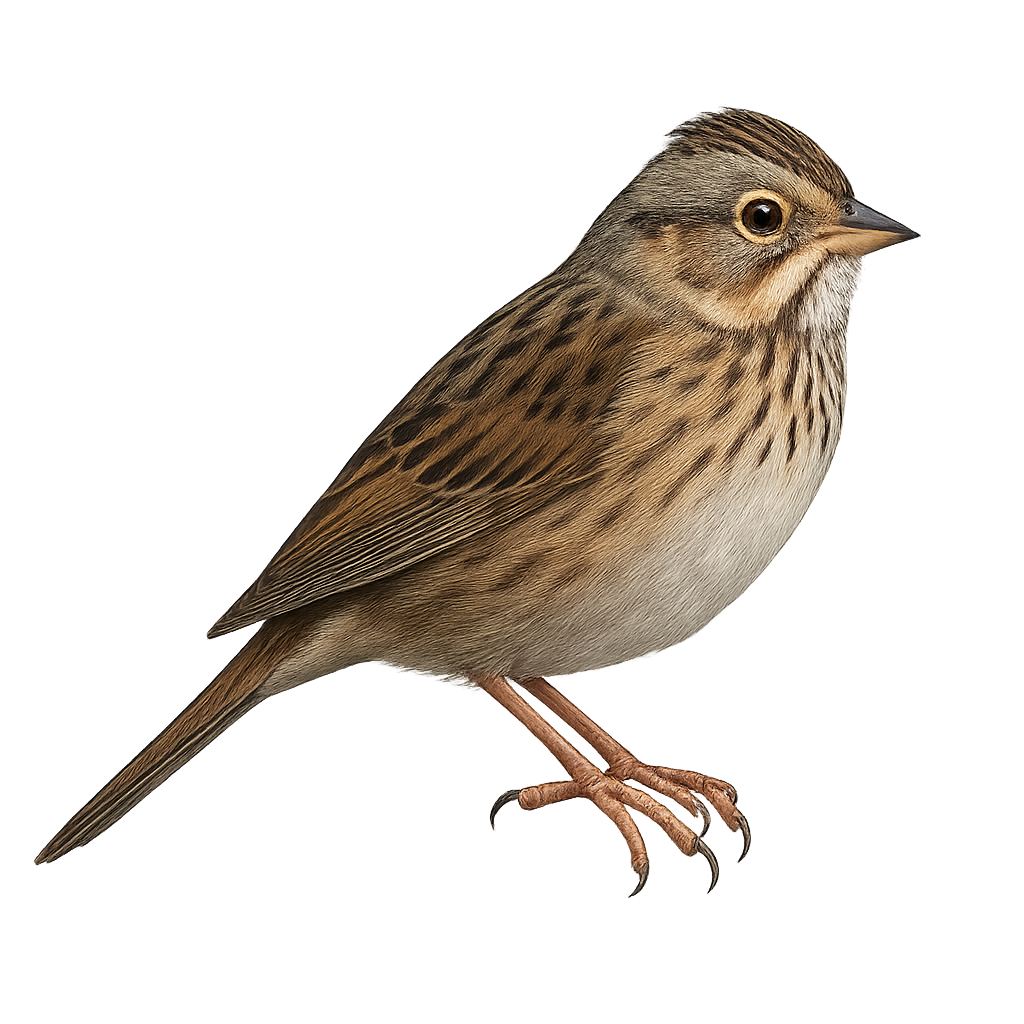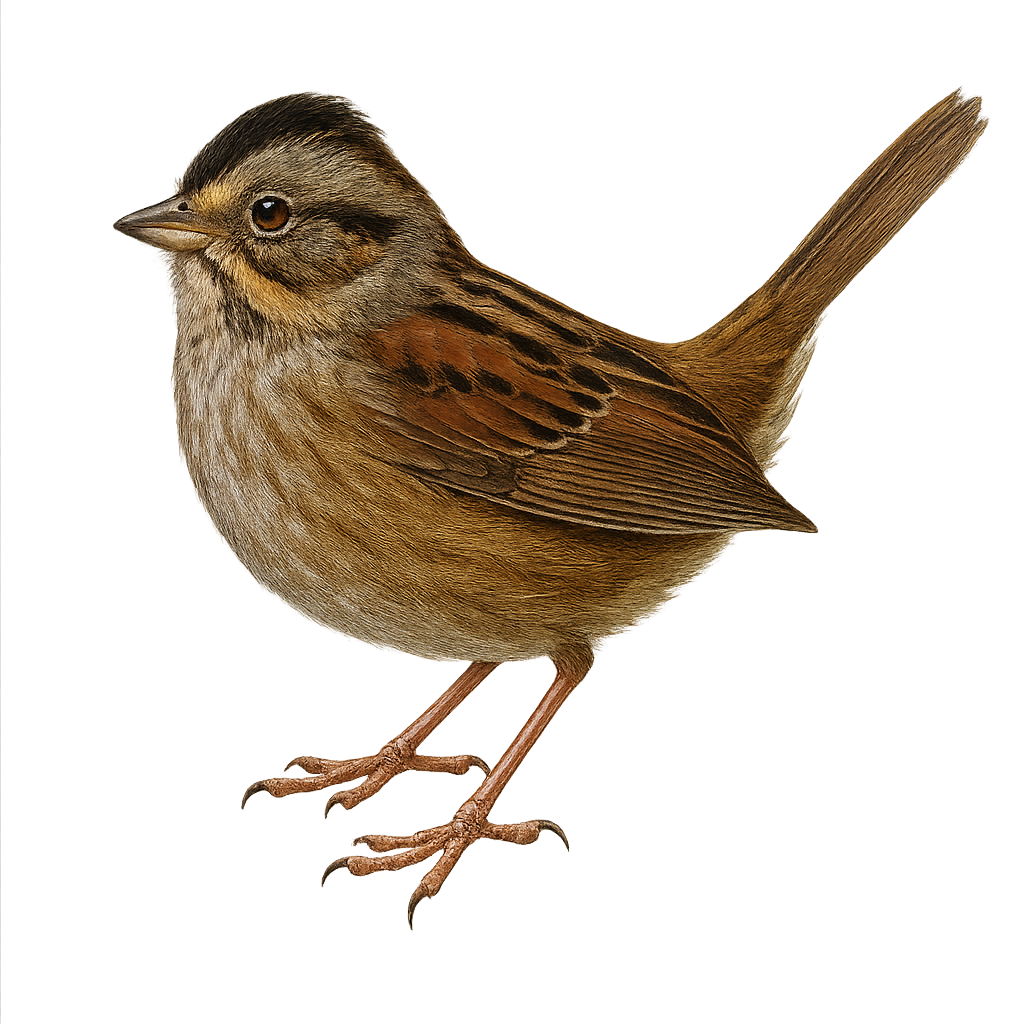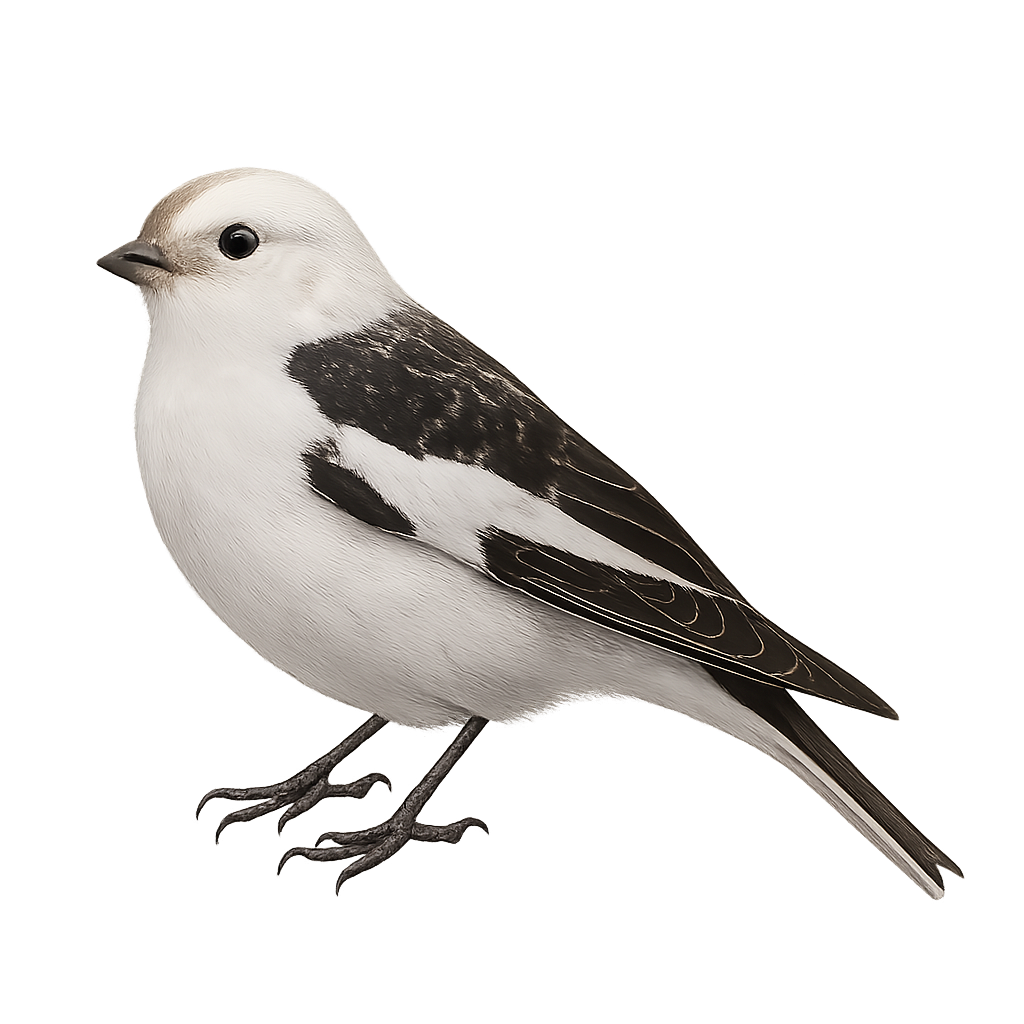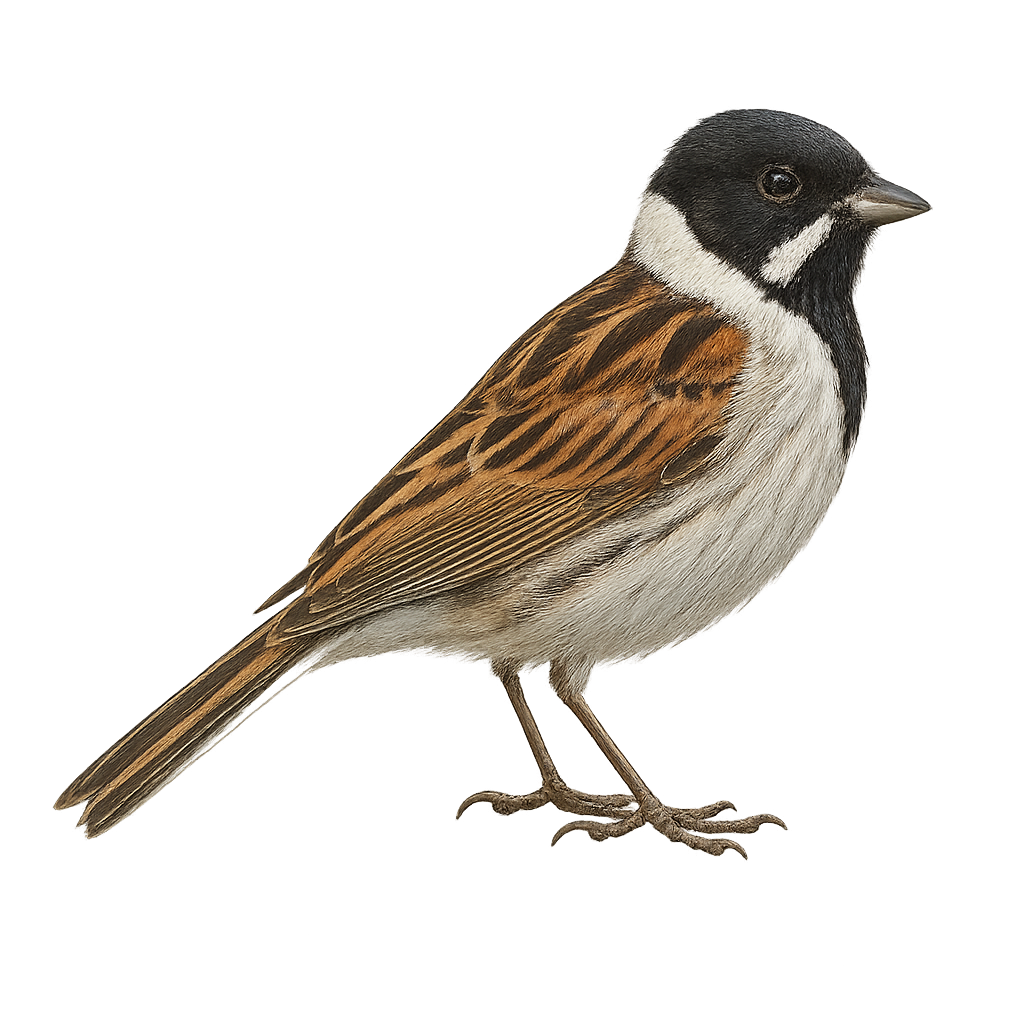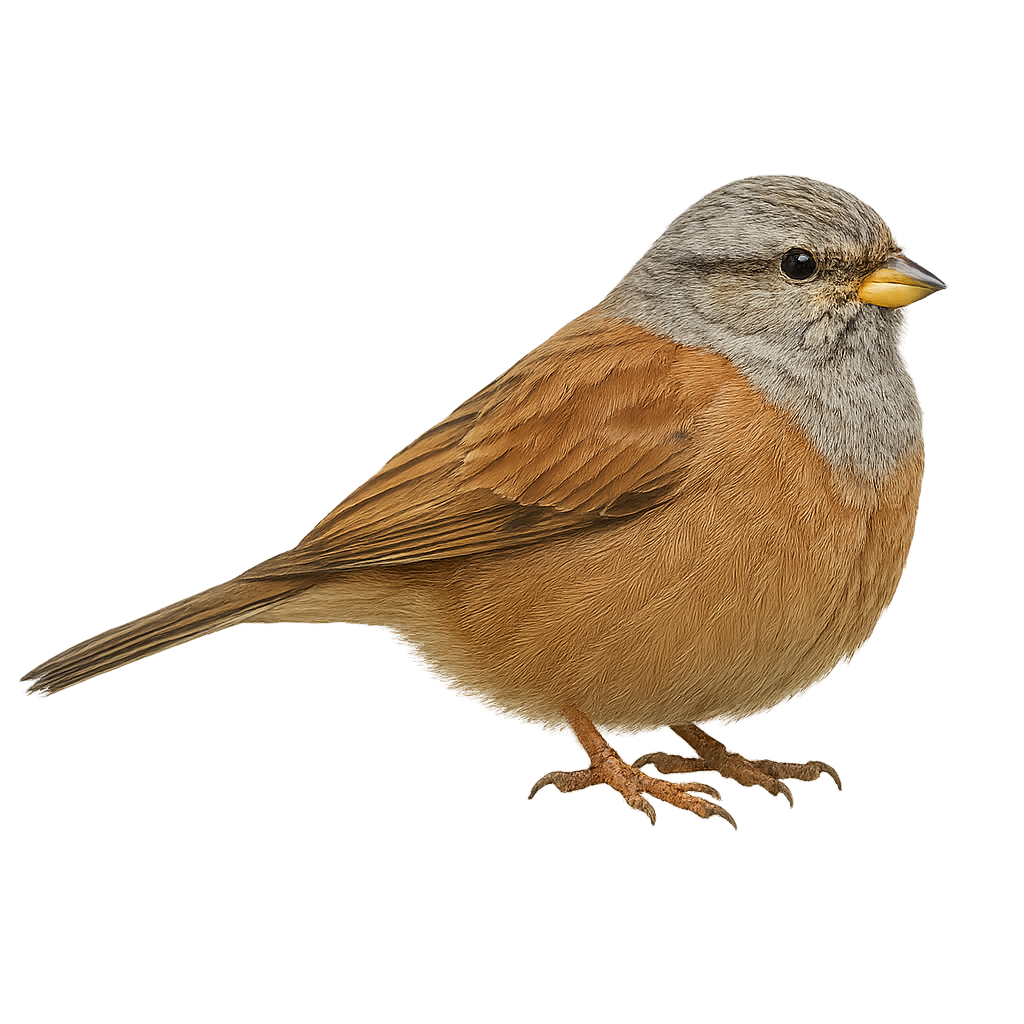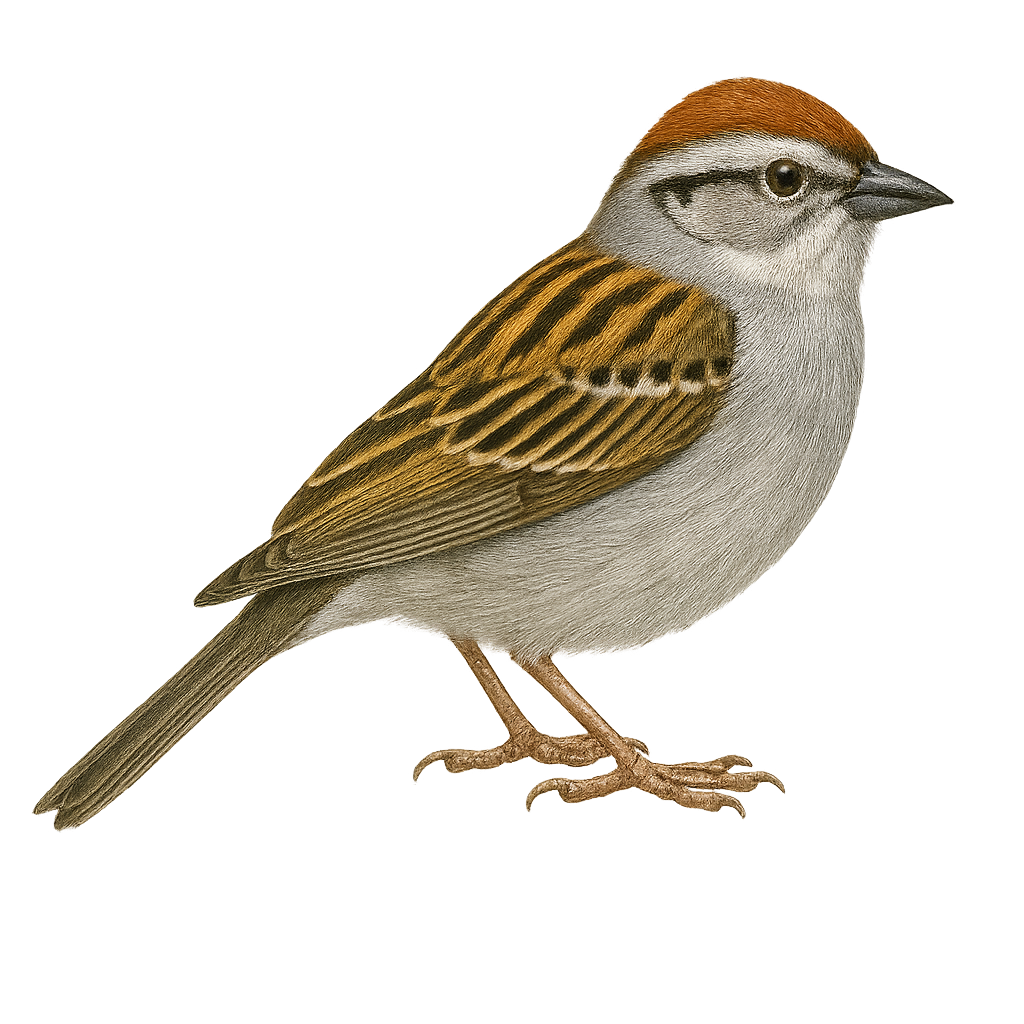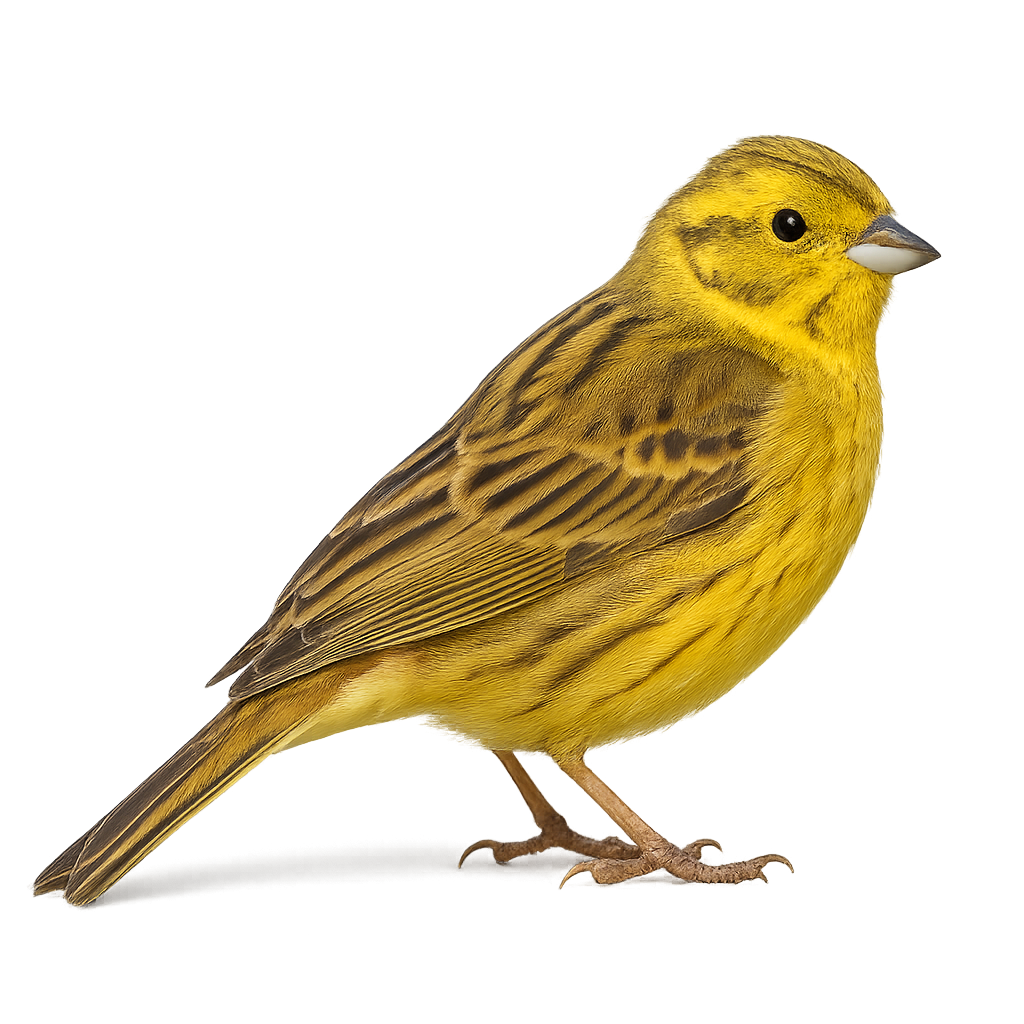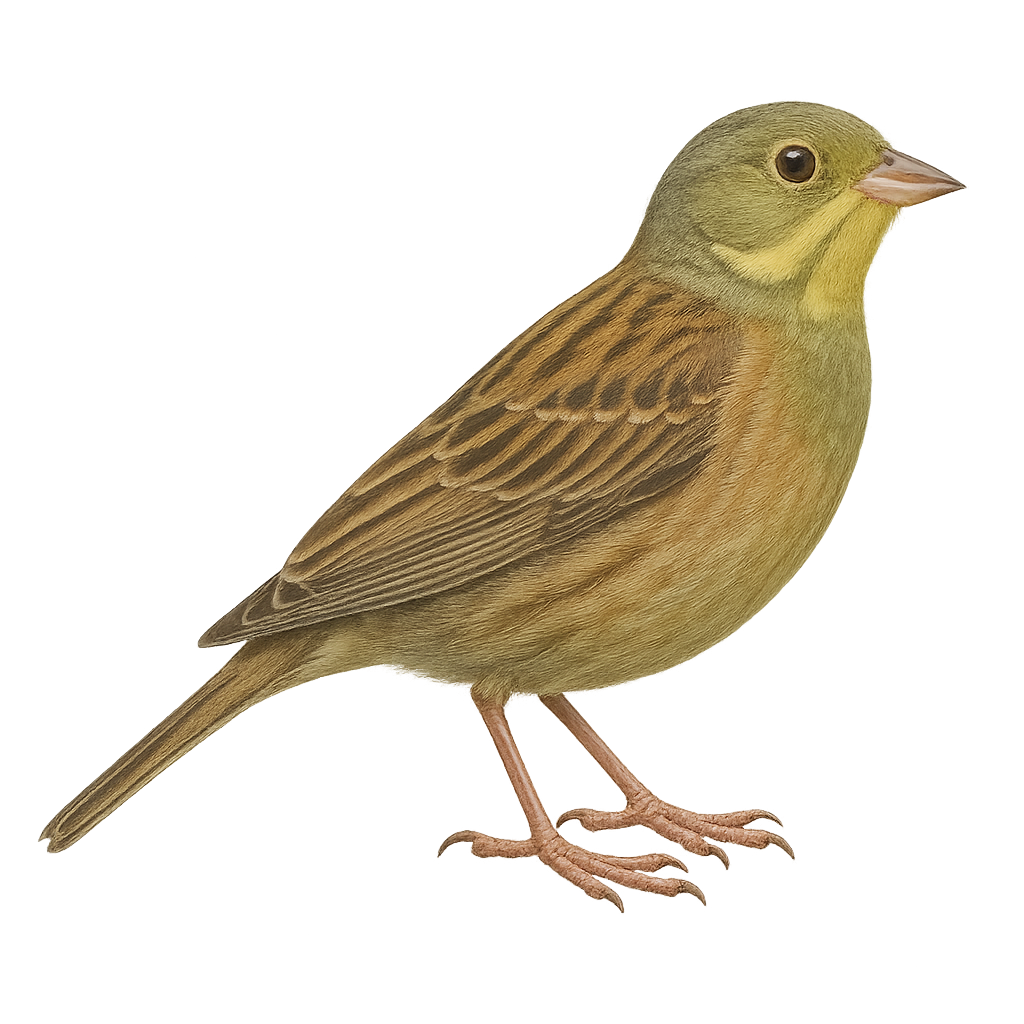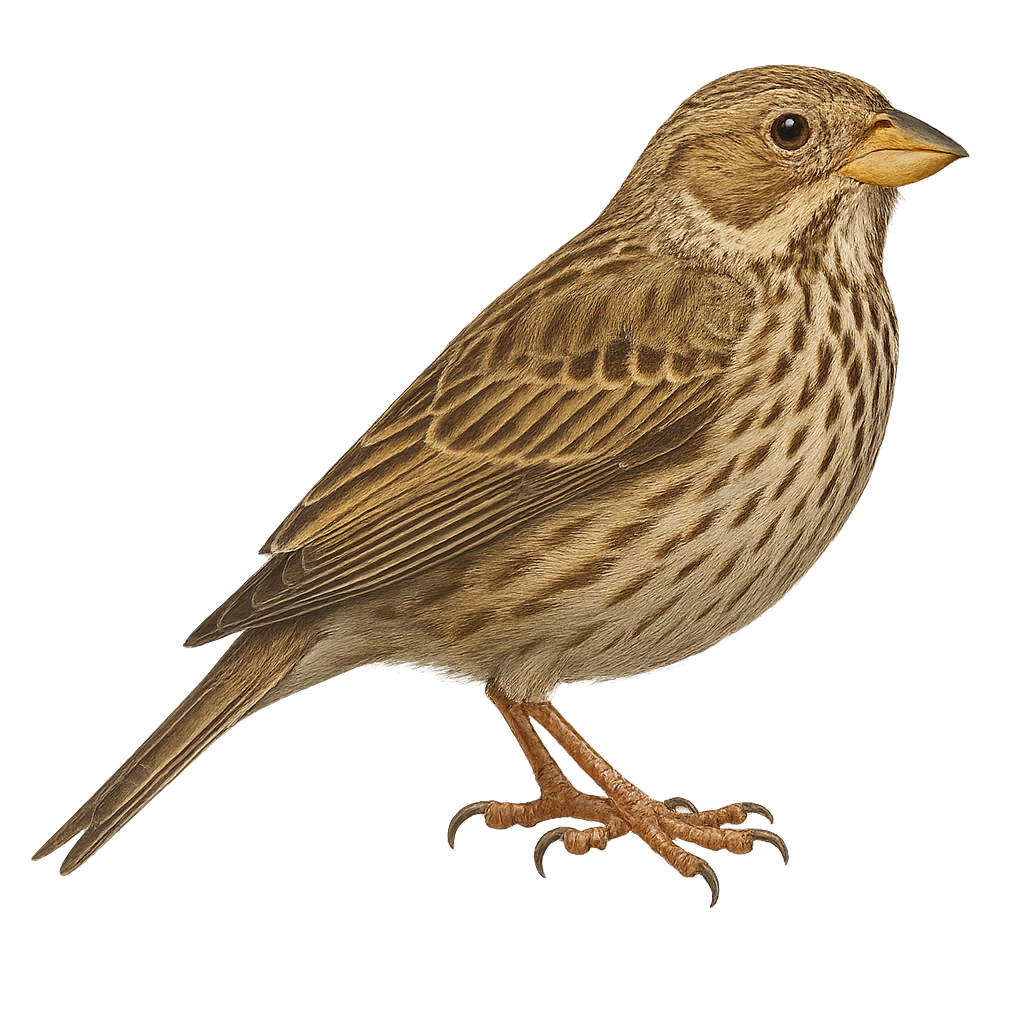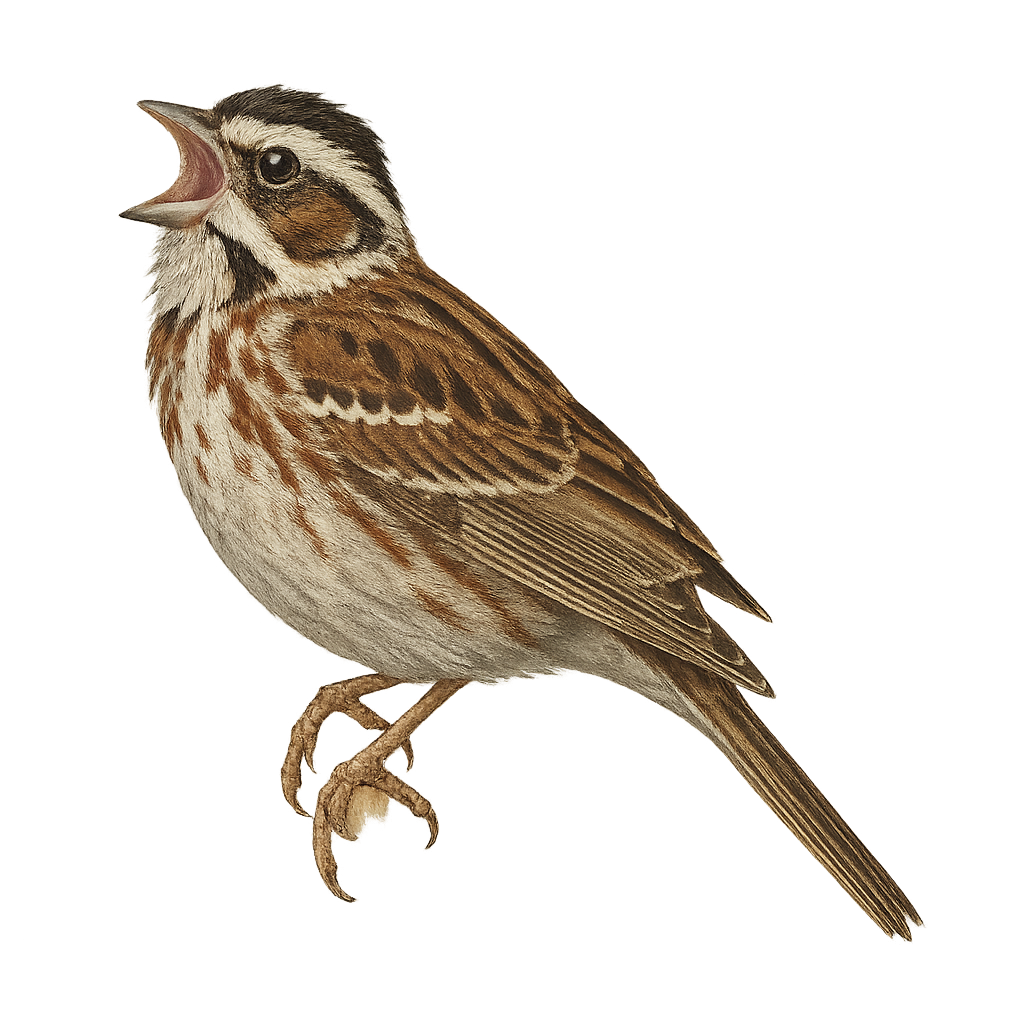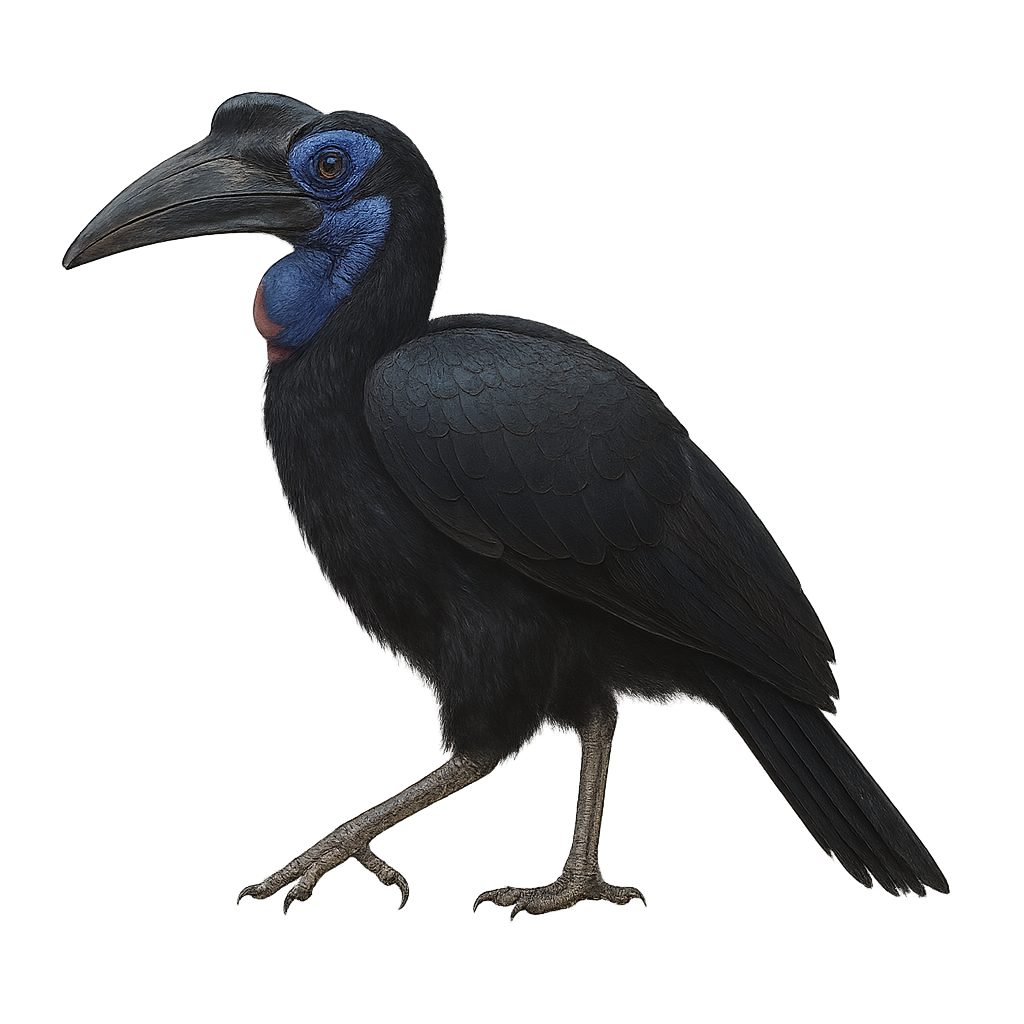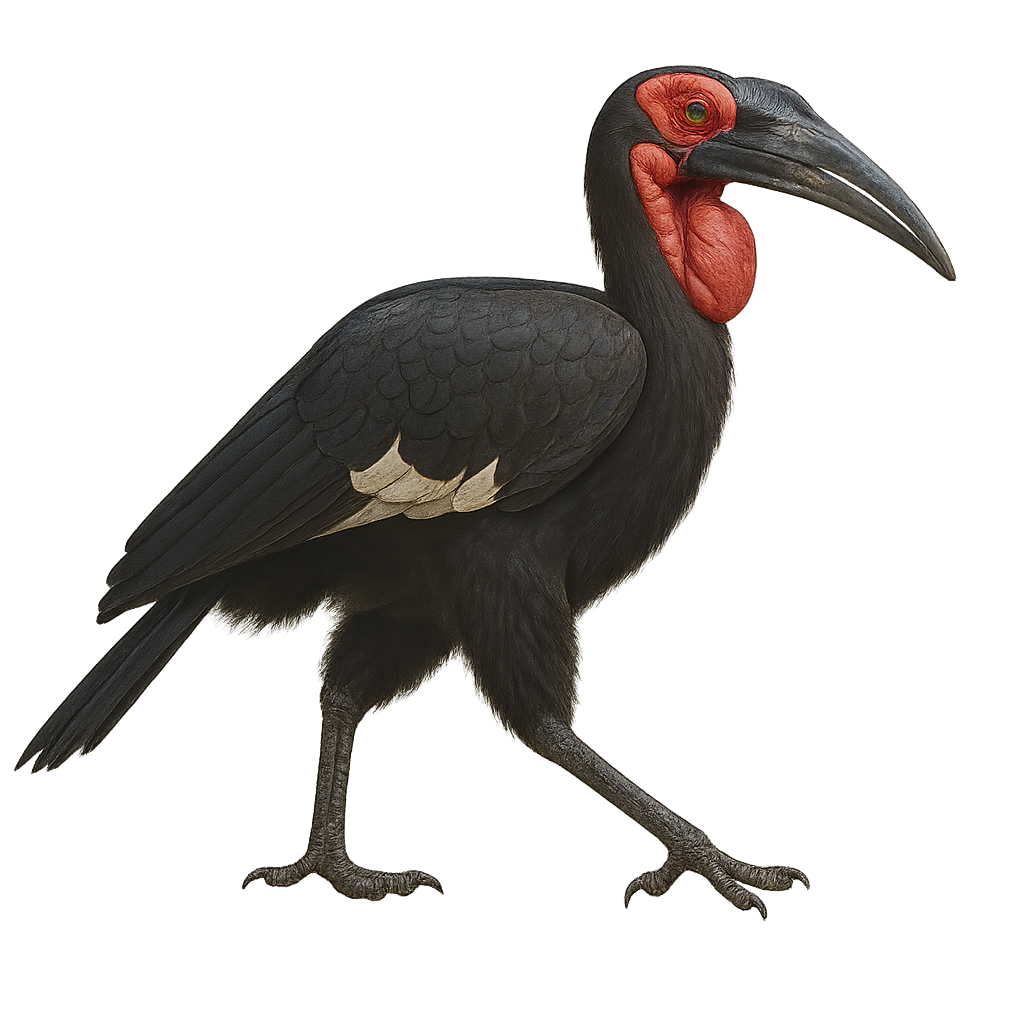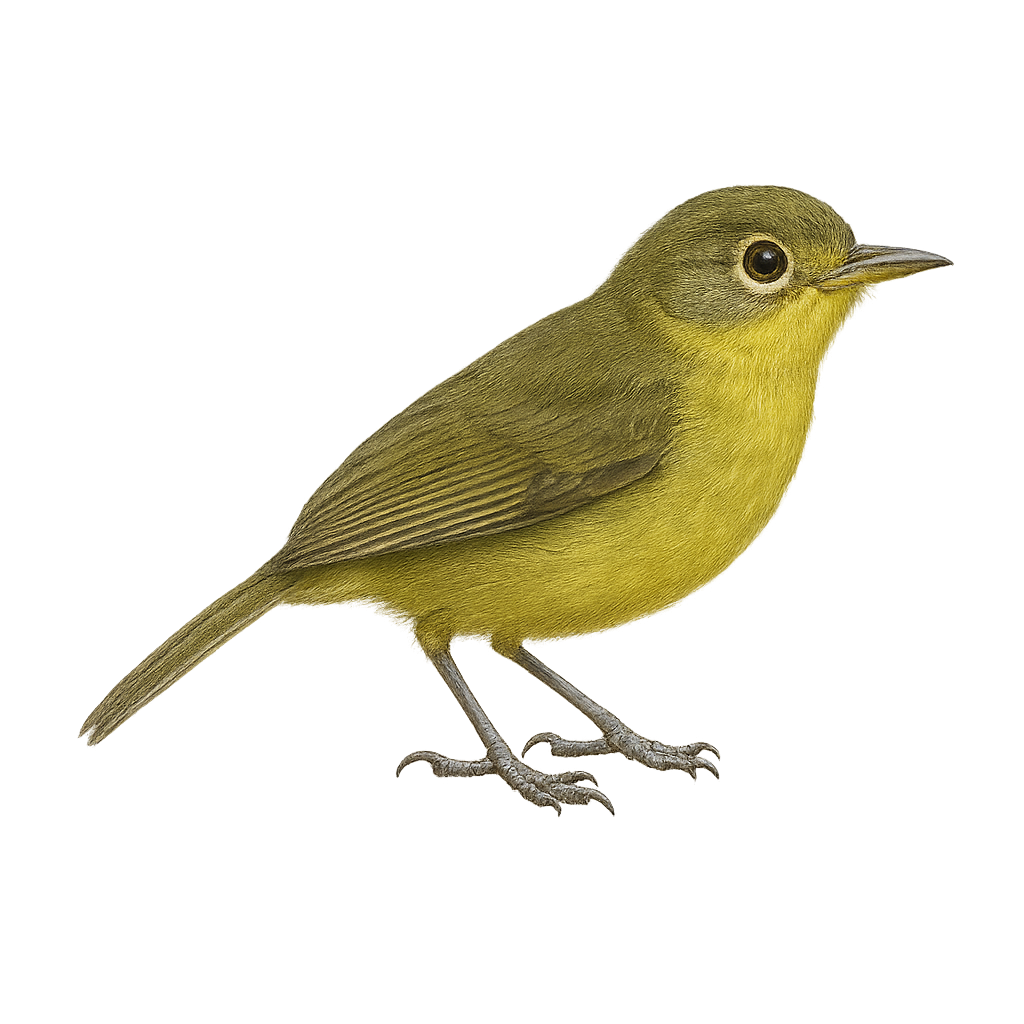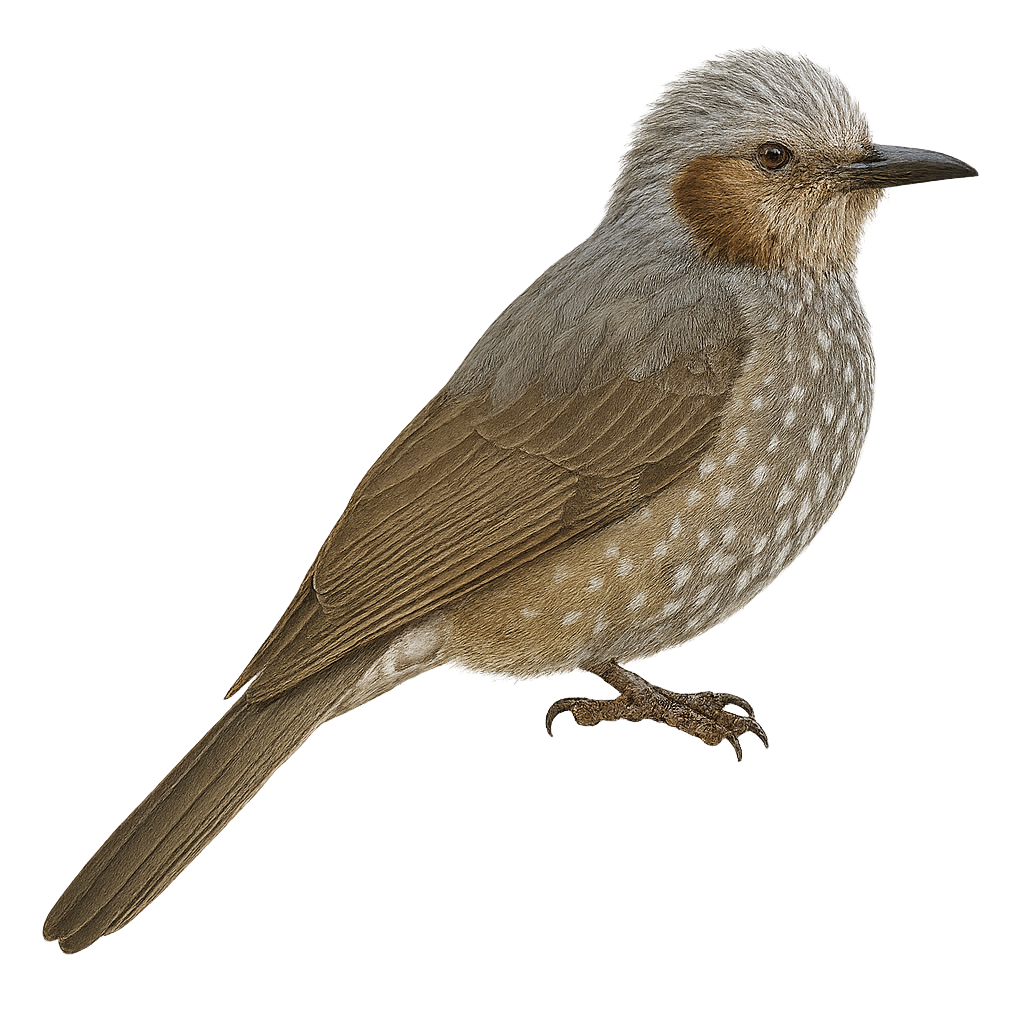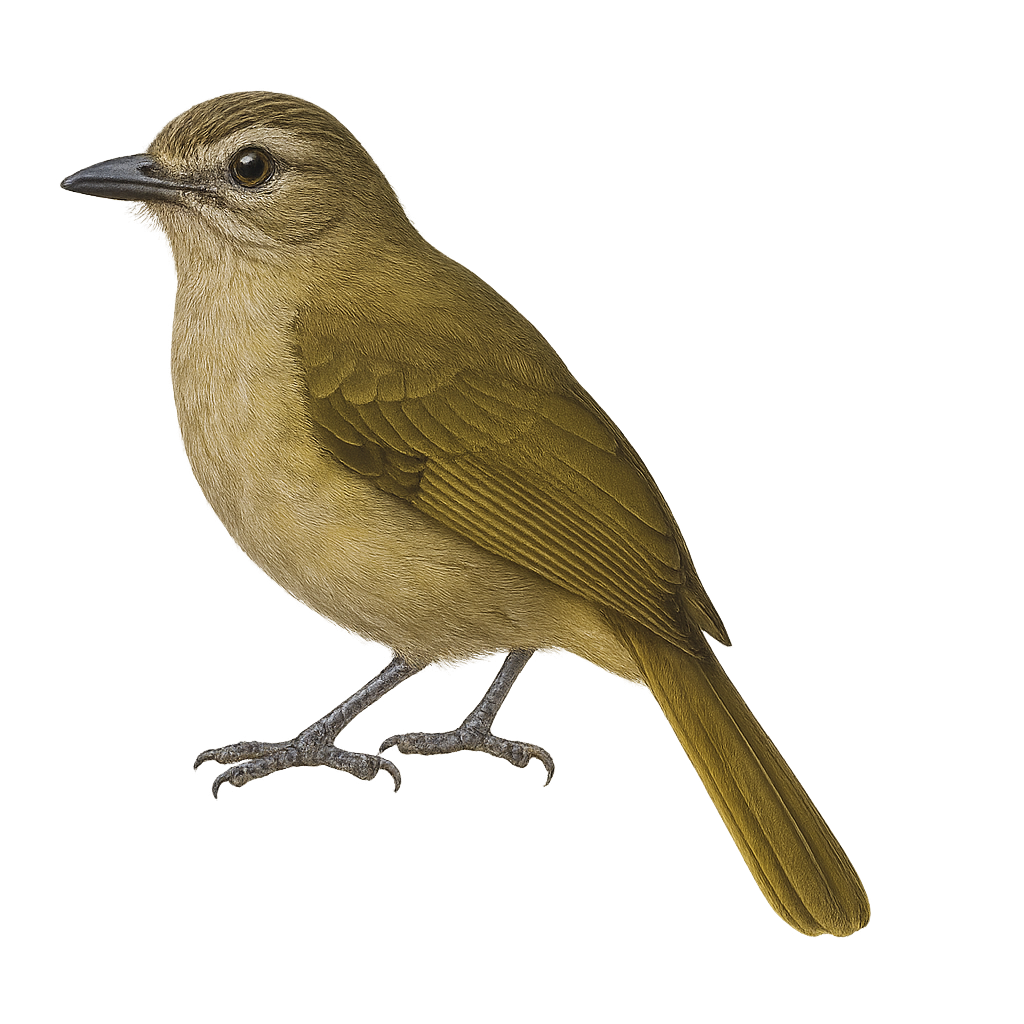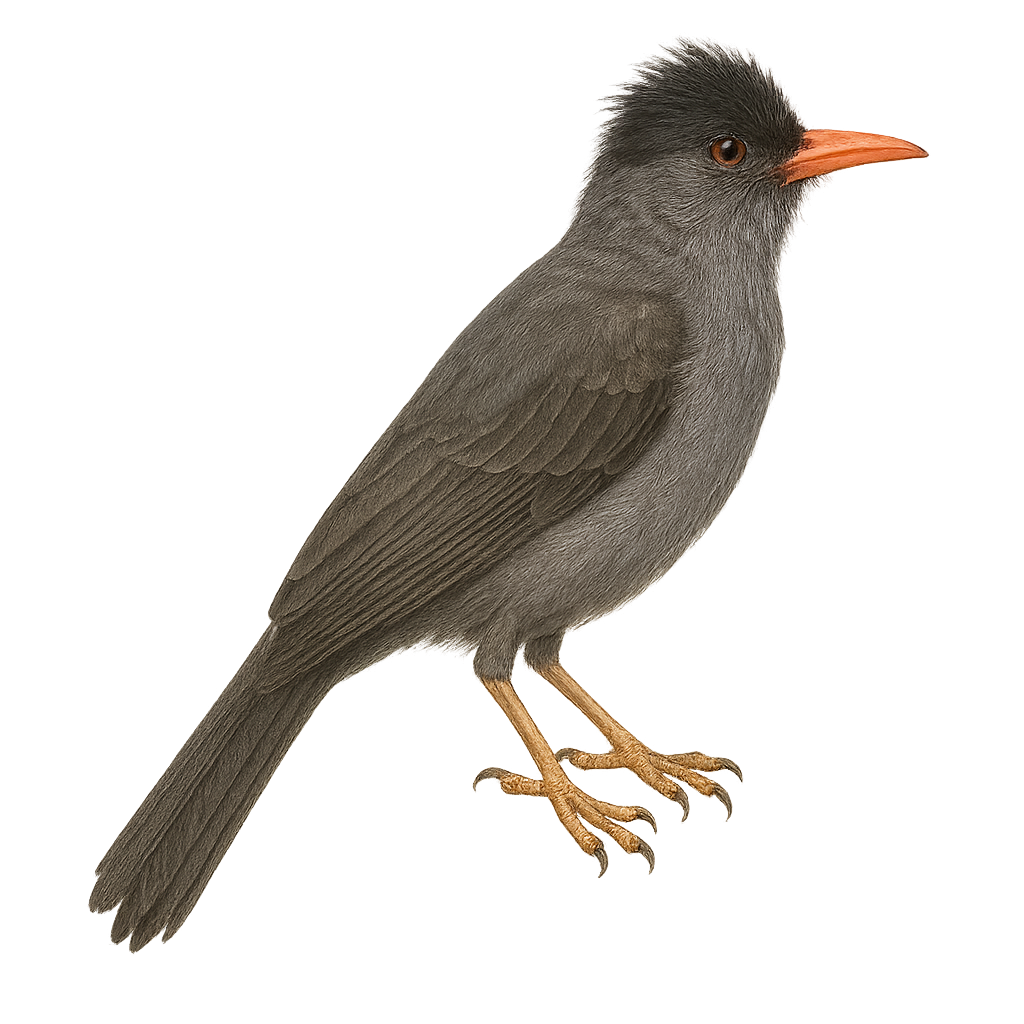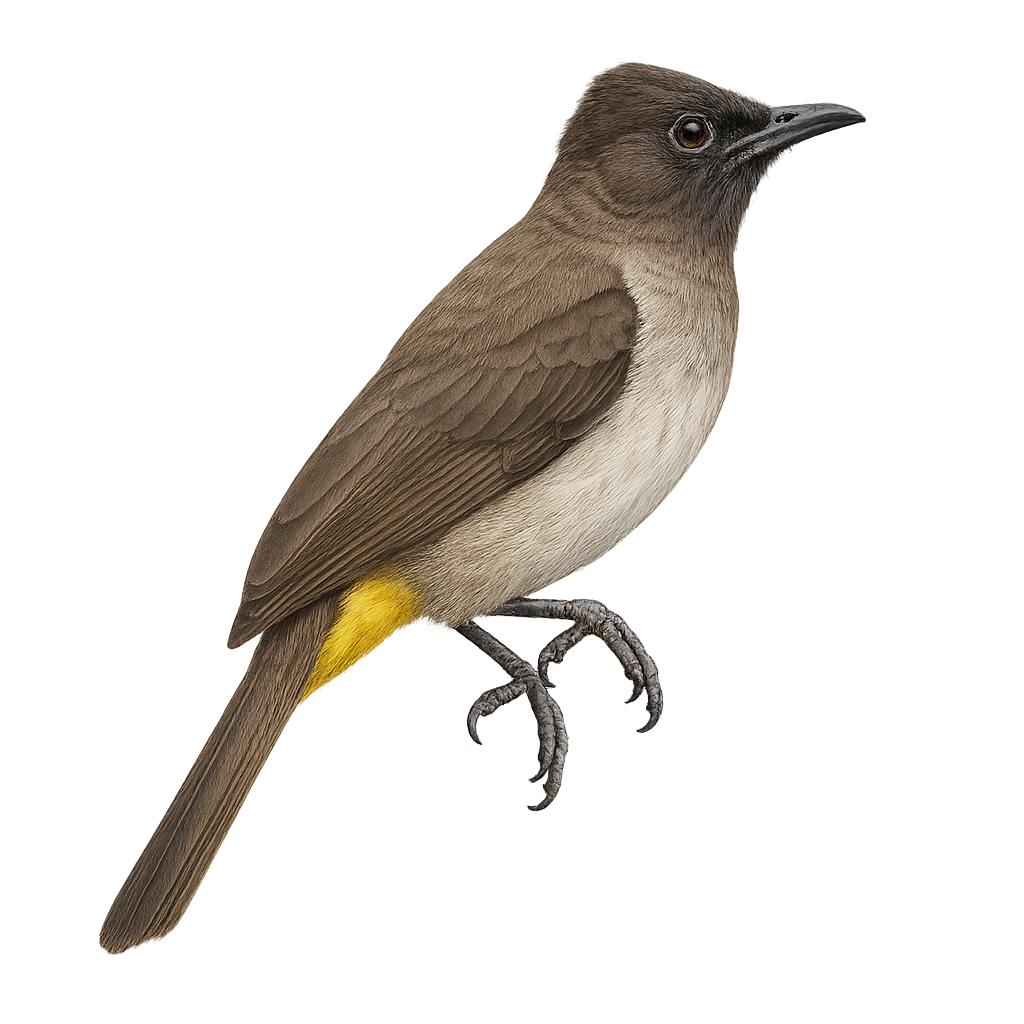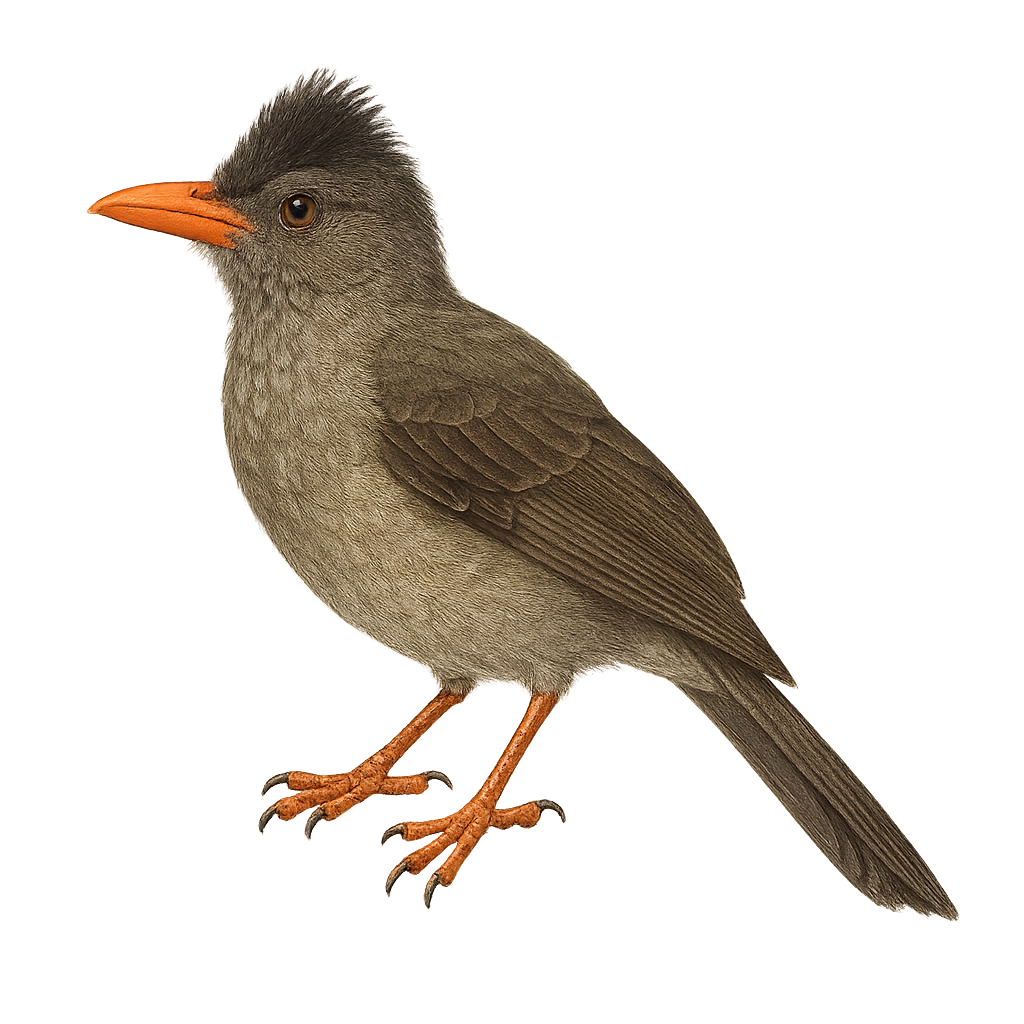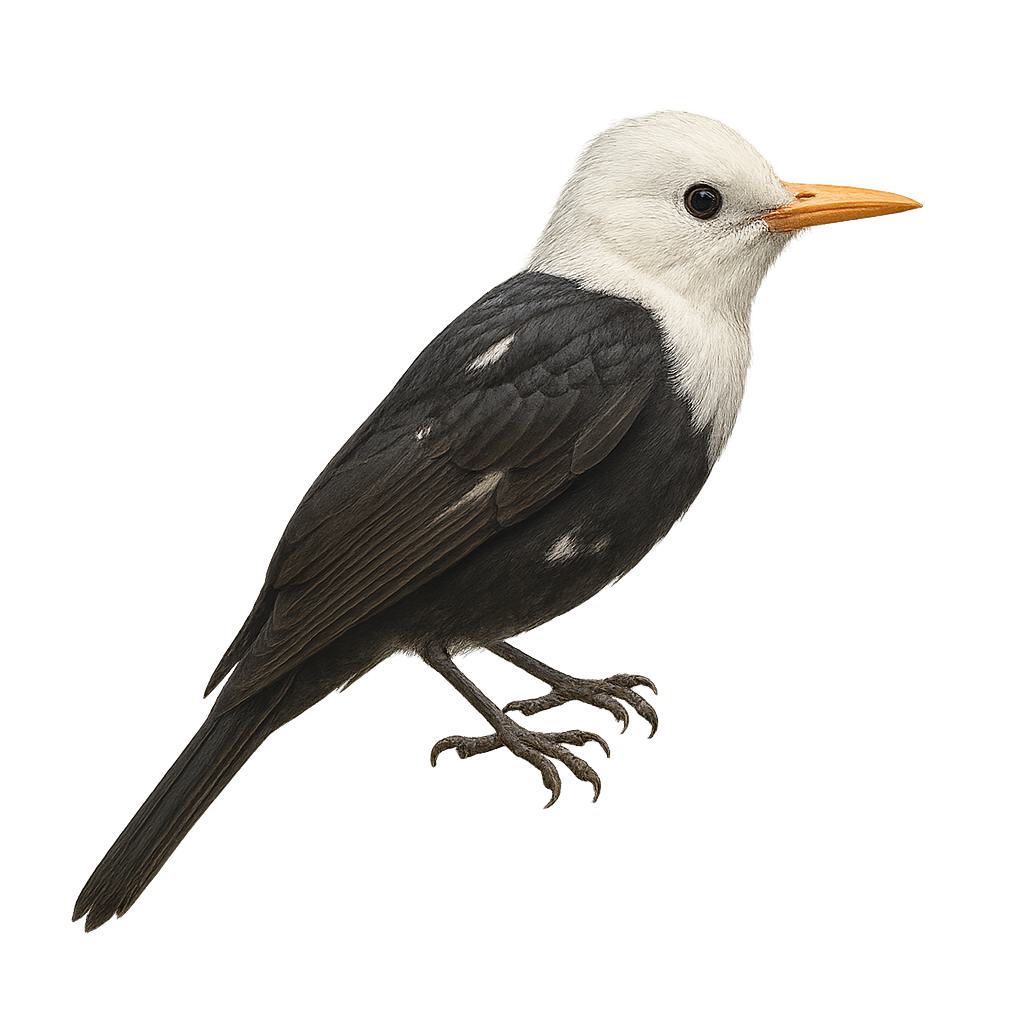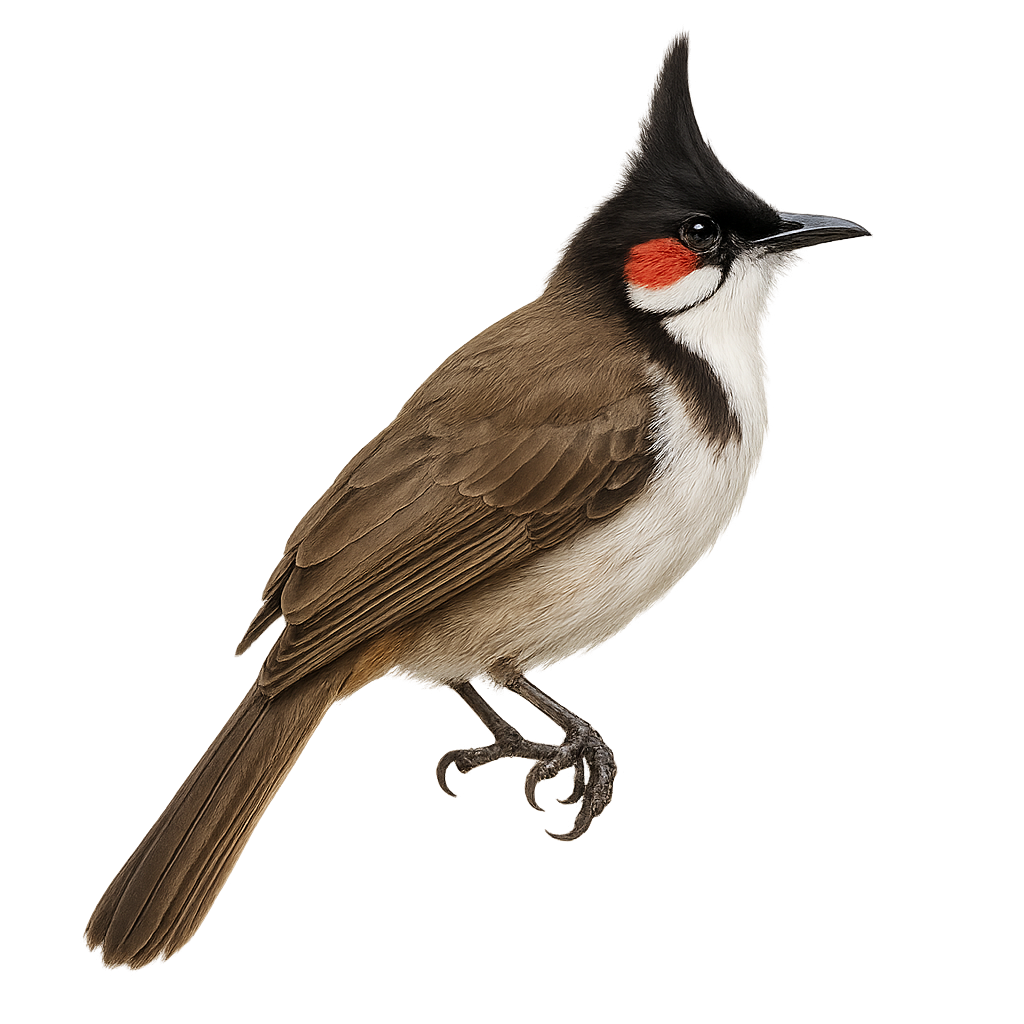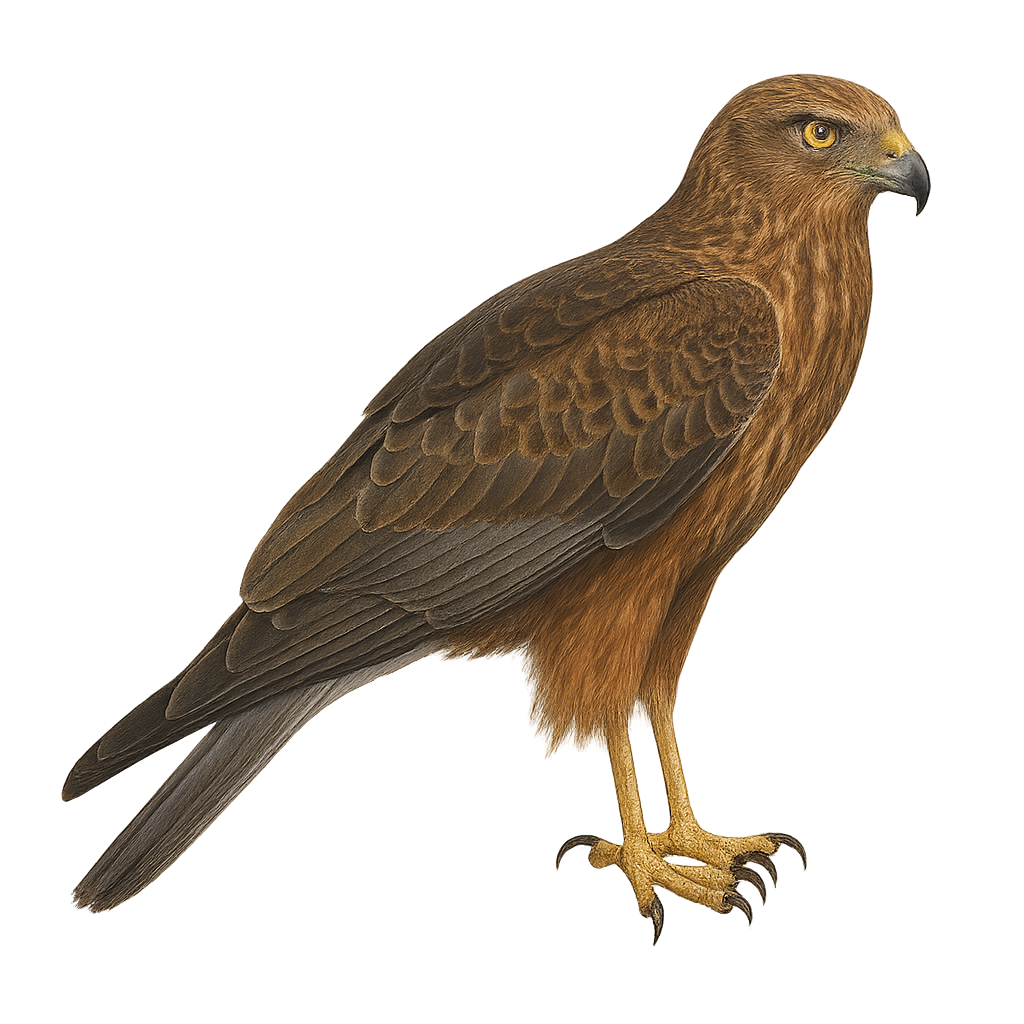The Saltmarsh Sparrow is a small passerine bird that primarily inhabits the salt marshes of the eastern United States. It is recognizable by its brown plumage streaked with black, with orange hues on the face and chest. Its tail is long and pointed, giving it its name. This sparrow is a coastal habitat specialist, feeding mainly on seeds and insects. It is often seen moving stealthily among tall grasses, searching for food. Although discreet, its melodious song can be heard in the spring. Unfortunately, its habitat is threatened by urbanization and climate change, making it a conservation concern.
The Yellow-browed Bunting, Emberiza chrysophrys, is a small passerine bird belonging to the Emberizidae family. It is easily recognized by its bright yellow eyebrows contrasting with its brown, streaked plumage. This bunting inhabits coniferous forests and shrublands in Asia, particularly in Siberia and China. As a migratory bird, it winters in Southeast Asia. Its song is a melodious trill, often heard during the breeding season. Though discreet, it can sometimes be seen in small flocks. Its population is stable, but it is vulnerable to habitat loss due to deforestation.
The Yellow Bunting, or Emberiza sulphurata, is a small passerine bird belonging to the Emberizidae family. It is primarily found in the wooded regions of Japan, where it is endemic. This bunting is notable for its bright yellow head, contrasting with its brown back and striped wings. It inhabits deciduous forests and shrubby areas, often near watercourses. Its song is melodious, consisting of clear, repetitive notes. Though discreet, it is occasionally seen in small groups. Its population is declining due to habitat loss and forest fragmentation. Preserving its natural habitats is crucial for its survival.
The Cirl bunting is a small passerine in the bunting family Emberizidae, measuring 16–17 cm in length, with streaked brown plumage and a yellow head marked by a black crown and dark throat. It inhabits sunny grasslands, hedgerows and scrub, feeding mainly on seeds and insects. During breeding, it builds a nest in low bushes and the male sings from an exposed perch to attract the female and defend its territory.
The Botteri's Sparrow is a small, inconspicuous bird primarily found in the grasslands and shrublands of the southern United States and Mexico. It is characterized by its dull brown plumage, which allows it to blend into its surroundings. This passerine prefers open habitats with low vegetation, where it feeds on seeds and insects. Its song, though simple, is a key aspect of its territorial behavior. During the breeding season, the male often sings from a low perch to attract a mate. Despite its modest appearance, the Botteri's Sparrow plays an essential role in the ecosystem by contributing to seed dispersal and insect population control.
The Brewer's Sparrow is a small passerine bird known for its subtle plumage and modest size. It features a brown back with dark streaks, a lighter belly, and a gray head with fine stripes. This sparrow is primarily found in the arid and semi-arid regions of western North America, where it inhabits shrublands and open grasslands. It is renowned for its melodious song, often heard during the breeding season. The Brewer's Sparrow is a migratory bird, spending its winters in the southwestern United States and northern Mexico. Although relatively common, its habitat is threatened by urban expansion and intensive agriculture.
The Lincoln's Sparrow, Melospiza lincolnii, is a small passerine bird belonging to the Passerellidae family. It is primarily found in North America, inhabiting wetlands, meadows, and open forests. This sparrow is identifiable by its brown plumage streaked with black and its finely streaked chest. Its head features a gray cap and a brownish eye stripe. Often heard before seen, it is known for its melodious and complex song. A migratory bird, it winters in the southern United States and Mexico. Its elusive nature and shy behavior make it a challenging subject for birdwatchers.
The Nelson's Sparrow, or Ammospiza nelsoni, is a small passerine bird primarily inhabiting the salt marshes and wet meadows of North America. It is recognizable by its distinctive plumage, featuring a gray-blue head, orange cheeks, and black streaks on its back. This sparrow is a migratory bird, breeding in northern regions and wintering along the Atlantic coast. It primarily feeds on seeds and insects, which it finds by foraging in dense vegetation. Although relatively discreet, its melodious song is often heard in spring. The Nelson's Sparrow is a vulnerable species due to the loss of its natural habitat, caused by marsh drainage and coastal development.
The Swamp Sparrow, or Melospiza georgiana, is a small passerine bird belonging to the family Passerellidae. It is primarily found in North America, frequenting wetlands such as marshes and lake edges. This sparrow is distinguished by its reddish-brown plumage on the back and gray on the belly, with a rusty cap and dark streaks on the wings. Known for its melodious song, it is often heard in spring and summer. The Swamp Sparrow is a migratory bird, wintering in the southern United States and Mexico. It feeds mainly on seeds, insects, and small invertebrates, which it finds by foraging in the moist ground.
The Snow Bunting, or Plectrophenax nivalis, is a bird from the Calcariidae family. It is easily recognizable by its white and black plumage, which allows it to blend into snowy landscapes of the Arctic and mountainous regions. In summer, it has darker plumage on its back and wings, while its belly remains white. This migratory bird breeds in Arctic and subarctic regions and migrates south in winter, sometimes reaching the northern coasts of Europe and North America. It primarily feeds on seeds and insects, which it finds by foraging on the ground. The Snow Bunting is a sociable bird, often seen in flocks, especially outside the breeding season.
The reed bunting is a small passerine bird found primarily in wetlands, reed beds, and marshes across Europe, Asia, and North Africa. It is easily recognized by its streaked brown plumage, light belly, and distinctive markings on the head, particularly the black-and-white patterns. This small bird primarily feeds on seeds and insects found in grasses and reeds.
The House Bunting, or Emberiza sahari, is a small bird with a discreet plumage, mainly brown with shades of gray and beige. It is well adapted to arid and semi-arid environments, blending perfectly into the landscape. It is primarily found in North Africa, especially in desert and mountainous regions. Known for its melodious song, often heard at dawn, it feeds mainly on seeds but can also consume insects, especially during the breeding season. The House Bunting is a sociable bird, often seen in small groups, and is relatively not very shy, making it accessible for observation.
The Chipping Sparrow, or Spizella passerina, is a small songbird common in North America. It is easily identified by its rufous cap, gray cheeks, and black eye line. Its plumage is primarily brown with streaks on the back, while the underside is lighter. It inhabits open areas, gardens, and parks, often near human settlements. This sparrow is known for its simple yet melodious song, often heard in spring and summer. It primarily feeds on seeds and insects, which it finds on the ground or in shrubs. During the breeding season, it builds a cup-shaped nest in shrubs or low trees.
The yellowhammer is a small passerine, 15–16 cm long, with bright yellow head and breast in males and duller, brown-streaked plumage in females. It inhabits open fields, hedgerows, and edges, feeding on seeds and insects while foraging on the ground. During breeding (April to July), the male sings from a perch or in flight to mark territory and attract the female.
The yellowhammer is a small passerine bird found primarily in fields, meadows, and hedgerows across Europe and Asia. It is easily recognized by its bright yellow plumage, brown striped head, and pale yellow belly. This bunting is mainly insectivorous, but it also feeds on seeds and berries. It is often heard singing, especially during the breeding season, where it defends its territory with a clear and distinct song.
Small passerine 16–17 cm long with streaked olive-brown plumage and a greenish-grey head. Inhabits cereal fields and margins, feeding mainly on seeds, supplemented by insects during breeding. Pairs nest on the ground, hiding nests among crops or low vegetation, and males sing from low perches to defend territory.
The corn bunting (Emberiza calandra) is a passerine bird in the family Emberizidae. It is a large, bulky bunting, 16–19 cm long, with heavily streaked buff-brown plumage. Found in open farmland, weedy wastelands and meadows across southern and central Europe, North Africa and Asia, it feeds mainly on seeds, supplemented by insects during the breeding season. During breeding it builds its nest on or near the ground, and the male sings from an exposed perch to attract the female and defend its territory.
The Rustic Bunting, Emberiza rustica, is a small passerine bird belonging to the Emberizidae family. It is primarily found in coniferous and mixed woodlands across Eurasia. This bunting is characterized by its brown and white plumage, with distinctive head markings, including a black cap and a white stripe above the eye. During the breeding season, the male displays brighter colors to attract females. A migratory bird, it winters in Southeast Asia. The Rustic Bunting is a discreet bird, often difficult to spot due to its shy behavior and dense habitat. Its population is declining, mainly due to habitat loss and climate change.
The Abyssinian Ground Hornbill, or Bucorvus abyssinicus, is a large terrestrial bird known for its striking black plumage and vivid red markings around its eyes and neck. It is primarily found in sub-Saharan Africa, inhabiting savannas and open grasslands. This bird is notable for its social behavior, often living in small family groups. It feeds mainly on insects, small reptiles, and mammals. Its call is deep and resonant, often heard at dawn. The Abyssinian Ground Hornbill plays an important ecological role in controlling insect and small animal populations. Its longevity and low reproductive rate make it vulnerable to environmental disturbances.
The Southern Ground Hornbill is an impressive bird, recognizable by its glossy black plumage and vivid red facial skin. It is one of the largest hornbills, measuring up to 1.2 meters in length. This bird is primarily terrestrial, moving in small family groups across the savannas and grasslands of southern Africa. It feeds mainly on insects, small reptiles, and mammals. The Southern Ground Hornbill is known for its longevity, living up to 70 years in captivity. However, it is threatened by habitat loss and the reduction of natural nesting sites.
The Xanthomixis zosterops, known as the Spectacled Tetraka, is a small bird endemic to Madagascar. It is characterized by its olive-green plumage and white-ringed eyes, which give it its name. This bird primarily inhabits the island's humid forests, where it feeds on insects and small invertebrates. It is often seen in small groups, actively moving in search of food. Although its habitat is threatened by deforestation, the Spectacled Tetraka remains relatively common in some protected areas. Its song is a soft, melodious trill, often heard at dawn.
The Brown-eared Bulbul, or Hypsipetes amaurotis, is a medium-sized bird known for its brownish ear patches and grayish plumage. It is primarily found in the forests and wooded areas of Japan, Korea, and parts of China. This bird is known for its melodious and varied song, often heard at dawn. Although relatively common in its natural habitat, it can be difficult to spot due to its wary behavior. The Brown-eared Bulbul primarily feeds on fruits, nectar, and insects, playing an important role in pollination and seed dispersal.
The White-browed Bulbul, or Pycnonotus luteolus, is a medium-sized bird known for its bright yellow head and distinctive white eyebrows. It primarily inhabits the dry and semi-arid regions of India and Sri Lanka. Its plumage is mainly olive-brown, allowing it to blend into its natural surroundings. This bird is often seen in small groups, feeding on fruits, insects, and nectar. It is known for its melodious and varied song, often heard at dawn. The White-browed Bulbul is a resilient bird, capable of adapting to various habitats, including urban gardens and sparse forests.
The Madagascar Bulbul, or Hypsipetes madagascariensis, is an endemic bird of Madagascar and surrounding islands. It is characterized by its greyish plumage, black head, and bright orange beak. This bird measures about 24 cm in length and is known for its melodious song. It inhabits various environments, including humid forests, wooded areas, and gardens. An omnivore, it primarily feeds on fruits, insects, and nectar. The Madagascar Bulbul is a sociable bird, often seen in small groups. Although relatively common, it is crucial to preserve its natural habitat to ensure its long-term survival.
The Pycnonotus barbatus, or Common Bulbul, is a medium-sized bird, measuring about 20 cm in length. It is easily recognizable by its black head, white belly, and bright yellow throat. This bird is highly adaptable and can be found in various habitats, from forests to urban gardens. It is known for its melodious and varied song, often heard at dawn. The Common Bulbul is a sociable bird, often seen in small groups. It primarily feeds on fruits, insects, and nectar. Its ability to adapt to different environments makes it a common species in many parts of sub-Saharan Africa.
The Mauritius Bulbul, or Hypsipetes crassirostris, is an endemic bird of Mauritius, known for its grayish plumage and sturdy beak. It primarily inhabits the island's tropical and subtropical forests, feeding on fruits, insects, and nectar. This bird is often seen in small groups, emitting melodious calls that resonate through the canopy. Although its habitat is limited, the Mauritius Bulbul has adapted to environmental changes but remains vulnerable to threats such as deforestation and invasive species. Its conservation is crucial to maintaining the ecological balance of its natural habitat.
The Black Bulbul, Hypsipetes leucocephalus, is a medium-sized bird known for its striking white head contrasting with its dark body. It is commonly found in dense forests and wooded areas of Southeast Asia. This bird is renowned for its melodious song and its adaptability to various habitats, including urban gardens. It primarily feeds on fruits, insects, and nectar, playing a crucial role in pollination and seed dispersal. Although usually solitary, it can form small groups when foraging. Its ability to adapt to different environments makes it a resilient species in the face of environmental changes.
The Red-whiskered Bulbul, or Pycnonotus jocosus, is a bird with distinctive plumage, recognizable by its pointed black crest and white cheeks adorned with red patches. Its chest is white, contrasting with its brownish belly. This bird is native to Southeast Asia but has been introduced to other parts of the world. It frequents various habitats, from forests to urban gardens. The Red-whiskered Bulbul is a sociable bird, often seen in small groups. Its melodious and varied song is appreciated by bird enthusiasts. Although primarily frugivorous, it also feeds on insects. Its adaptability allows it to thrive in diverse environments.
Montagu's Harrier is a medium-sized diurnal raptor, easily recognizable by its light gray plumage on the top and white underside, as well as its long, narrow wings and light flight. It primarily inhabits open areas such as grasslands, cultivated fields, and steppe regions, where it hunts small mammals, birds, and insects. This raptor flies low over the ground searching for prey, often gliding or making wide circles.
Montagu's Harrier is particularly active during the breeding months, where it can be seen flying in pairs, sometimes forming small colonies. Migratory, it leaves its breeding grounds in Europe to head to North Africa during the winter. While its population is declining in some areas due to habitat loss and intensified agriculture, conservation efforts are underway to stabilize its numbers.
The Swamp Harrier, or Circus approximans, is a medium-sized diurnal raptor commonly found in the wetlands of Australia and New Zealand. It is characterized by its dark brown plumage with lighter shades on the belly and wings. Adults boast an impressive wingspan of up to 1.2 meters. This opportunistic predator primarily feeds on small mammals, birds, and reptiles. It is often seen gliding over marshes and grasslands, using its keen eyesight to spot prey. Although generally solitary, it can be observed in small groups during migration. Its adaptability to various habitats makes it a resilient species, though wetland destruction may threaten some local populations.


